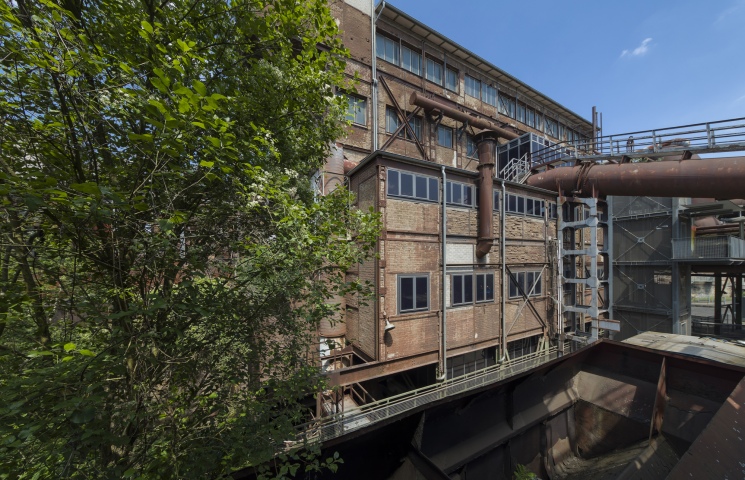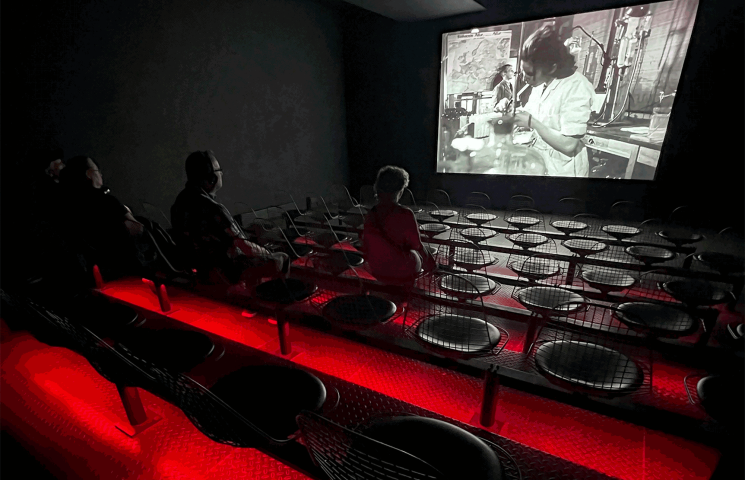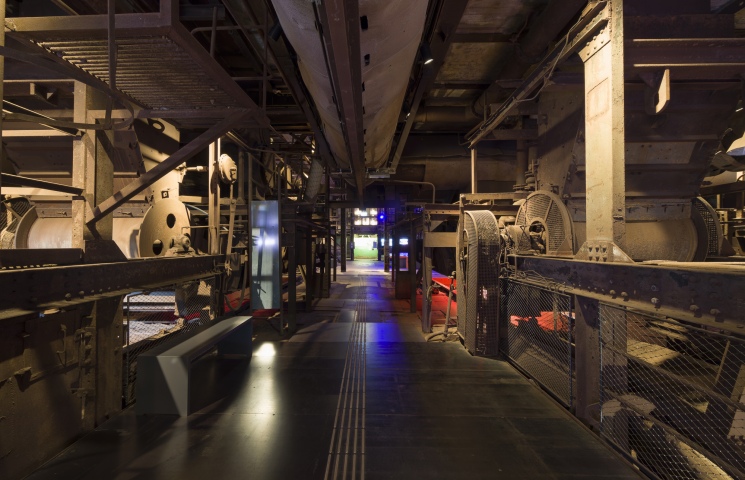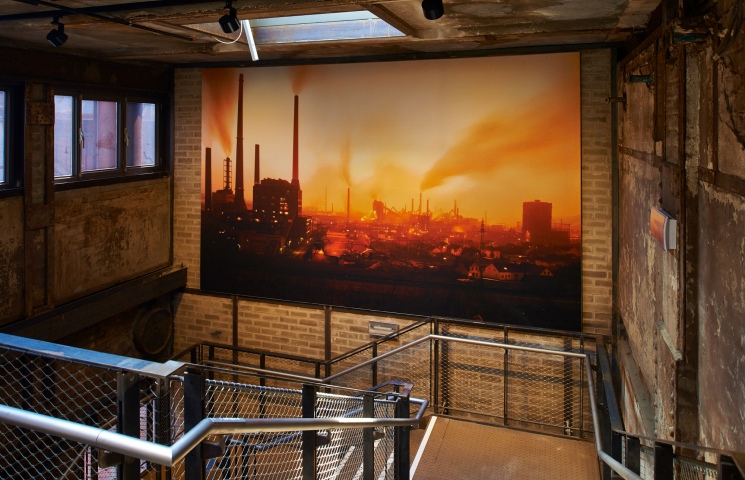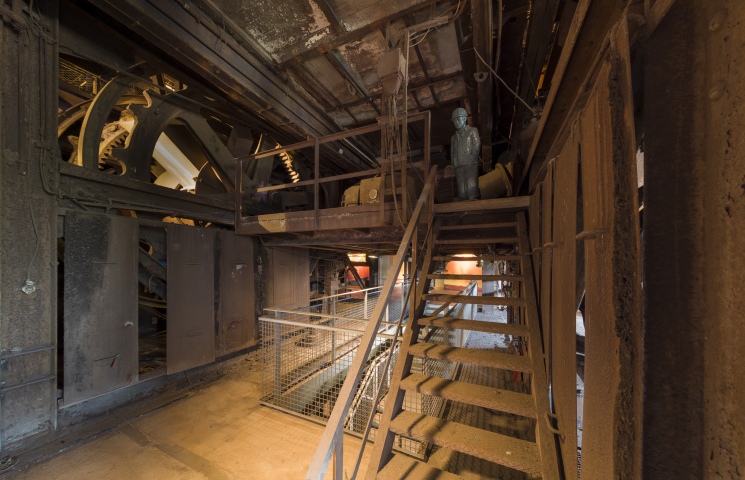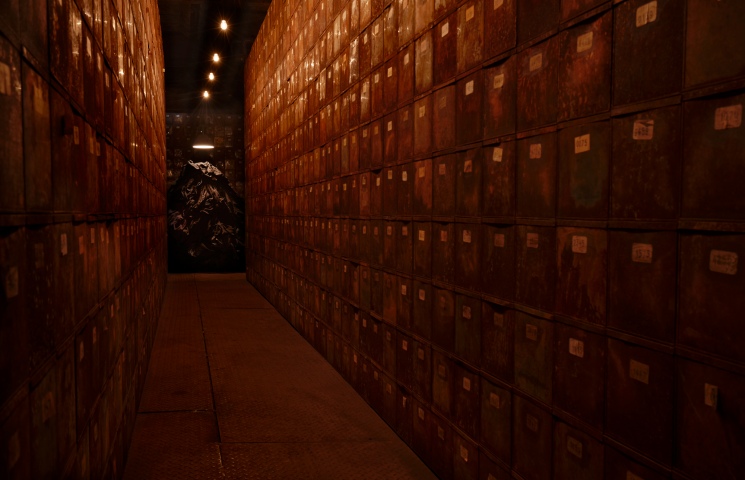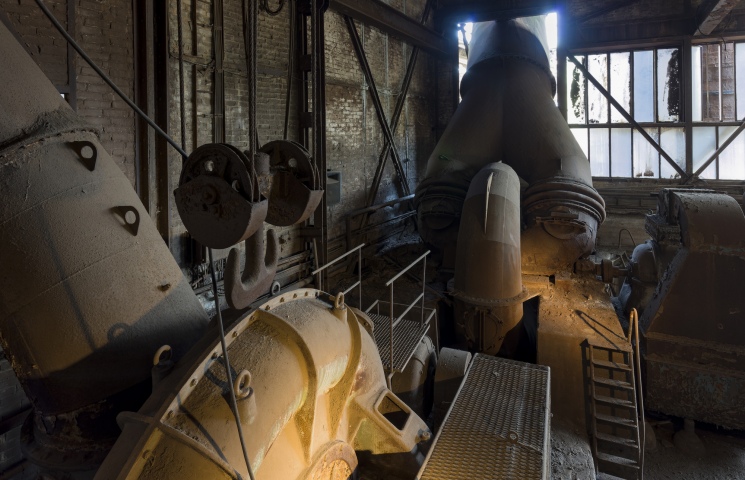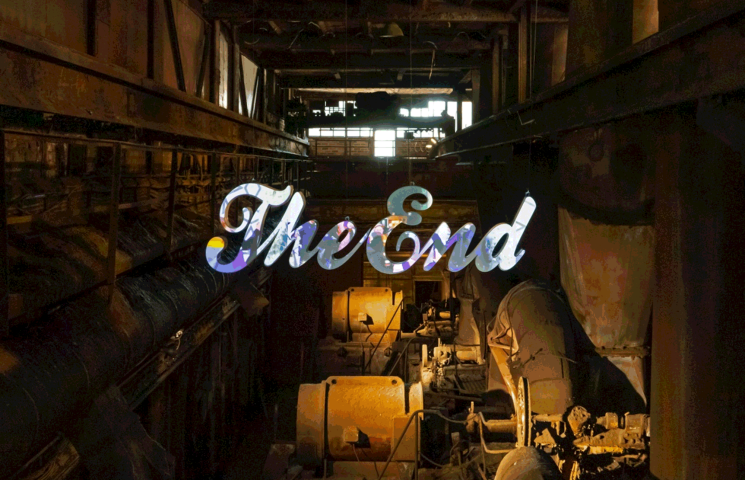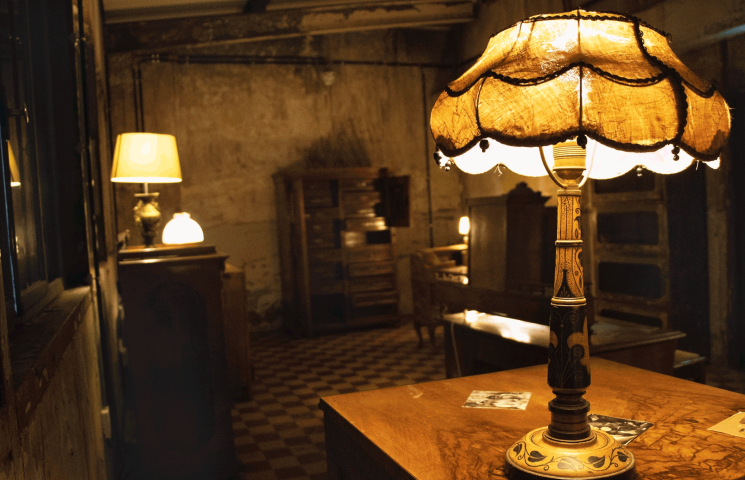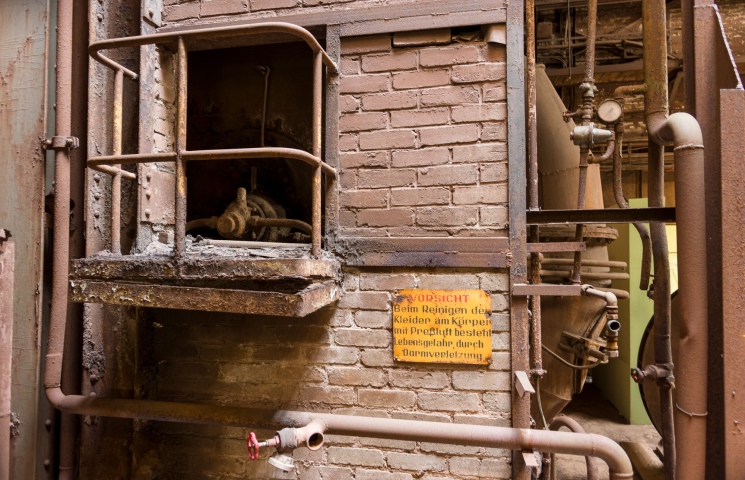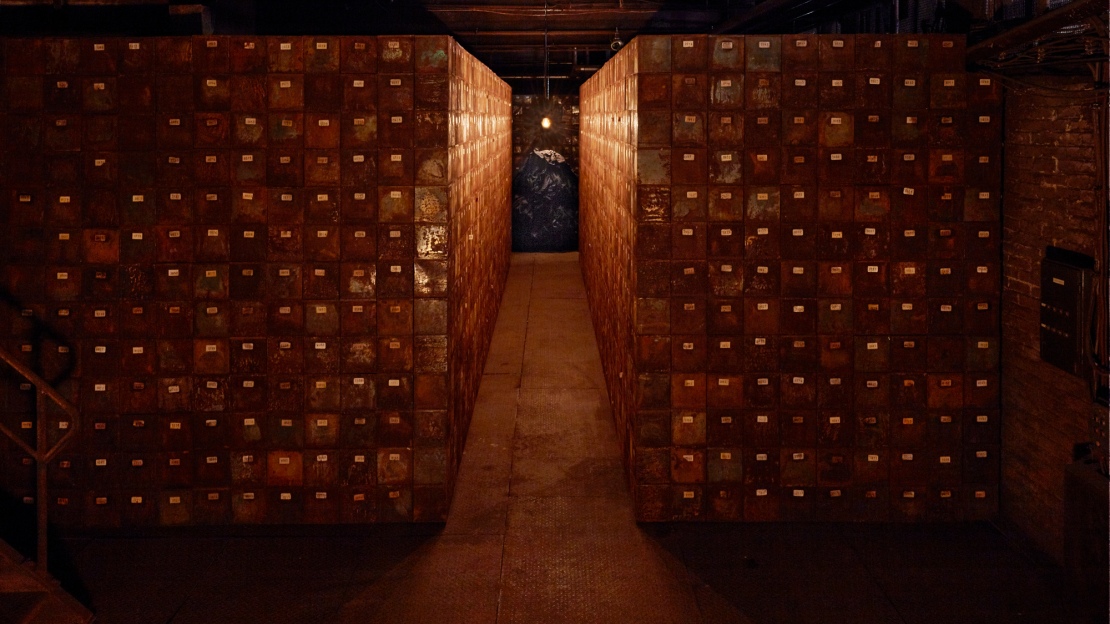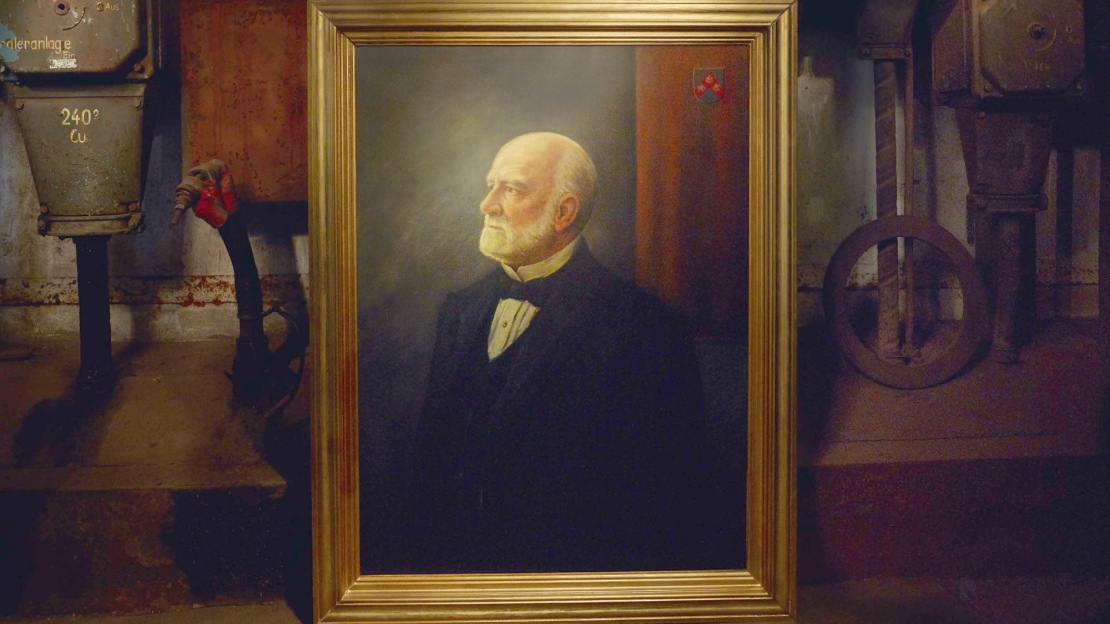Sintering plant
Sintering plant
Year of construction: 1928, added to in 1938
In operation: 58 years until the works were shut down
One of the largest sinter plants in Europe was built in Völklingen in 1928. Sintering is a high-temperature process that is used to fuse together the ore dust that is produced when iron ore is crushed for use in a blast furnace. This was done by heating it up to melting temperature. The material was then broken into pieces about the size of a fist, cooled, and reused in the blast furnace. This reduced the consumption of raw materials and improved the quality of the pig iron.
